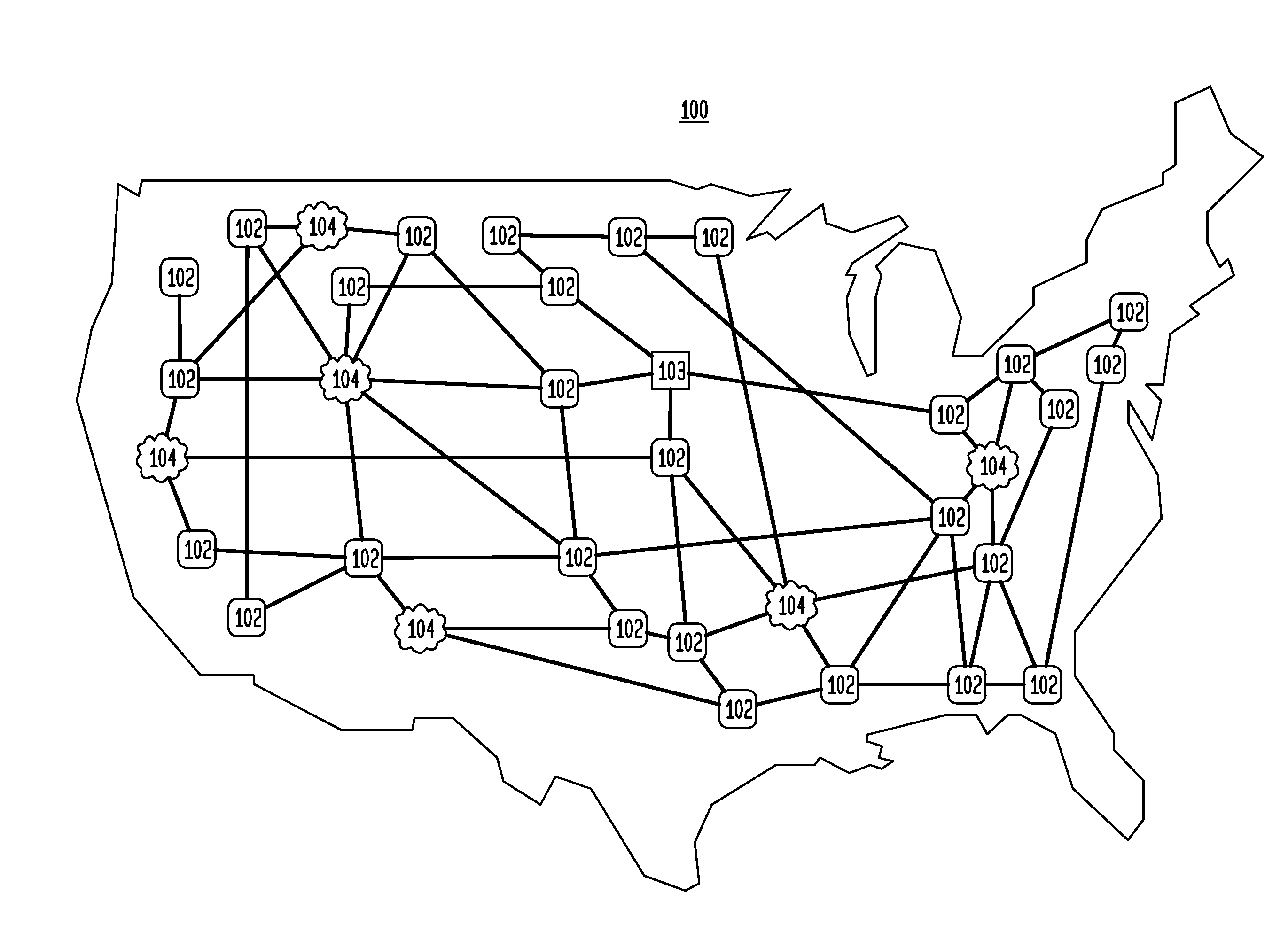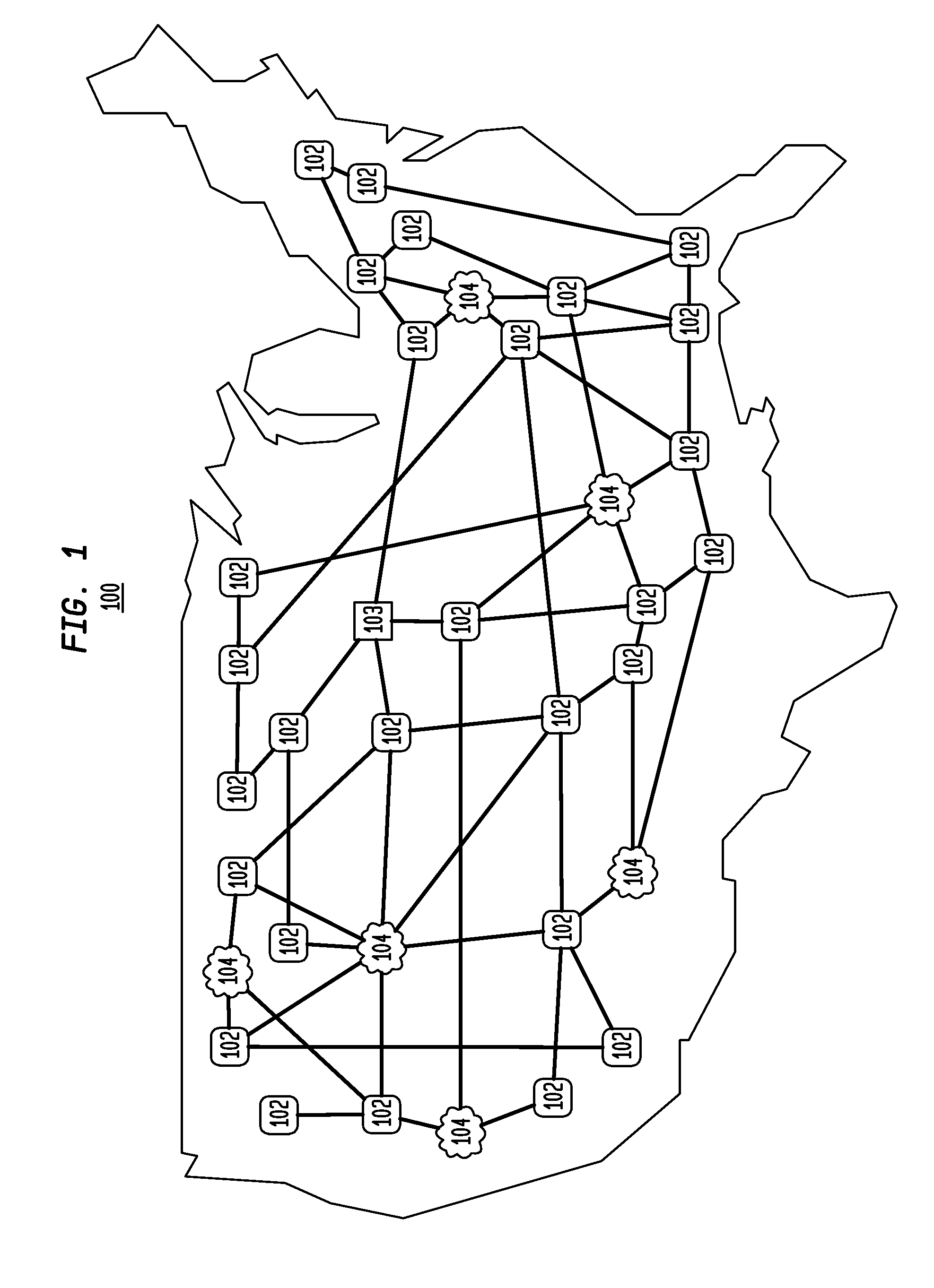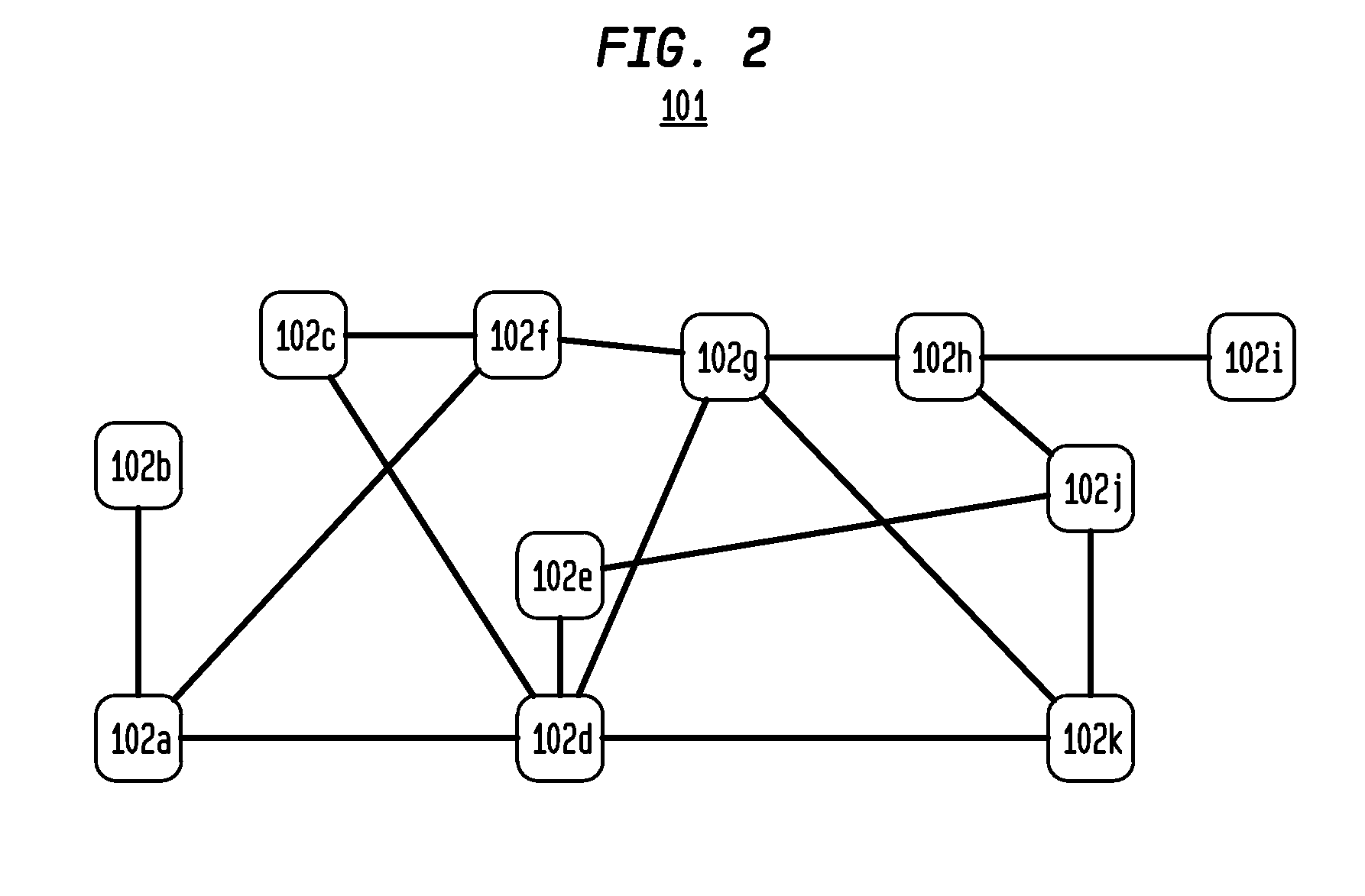System and method for optical bypass routing and switching
- Summary
- Abstract
- Description
- Claims
- Application Information
AI Technical Summary
Benefits of technology
Problems solved by technology
Method used
Image
Examples
Embodiment Construction
[0020]FIG. 1 illustrates an embodiment of a network configuration utilizing the technology described herein. There is shown an arbitrary mesh network 100 composed of a number of nodes, 102, and networks 104, interconnected to each other to facilitate the transmission of data packets within the network 100. The network 100 can be a core or backhaul network. The network 100 employs an arbitrary mesh topology wherein each node 102 in the network 100 is connected to one or more nodes 102 in the network 100. The connection between nodes 102 in the network 100 is dynamic and can be reconfigured in the event of broken or blocked paths. Nodes 102 in a mesh network do not require a direct connection between all the other nodes 102, rather the connection can be made through multiple hops through intermediate nodes.
[0021]The nodes 102 can be connected to other networks 104 and can facilitate communication between the different networks 104. The nodes are connected via any type of communication...
PUM
 Login to View More
Login to View More Abstract
Description
Claims
Application Information
 Login to View More
Login to View More - R&D
- Intellectual Property
- Life Sciences
- Materials
- Tech Scout
- Unparalleled Data Quality
- Higher Quality Content
- 60% Fewer Hallucinations
Browse by: Latest US Patents, China's latest patents, Technical Efficacy Thesaurus, Application Domain, Technology Topic, Popular Technical Reports.
© 2025 PatSnap. All rights reserved.Legal|Privacy policy|Modern Slavery Act Transparency Statement|Sitemap|About US| Contact US: help@patsnap.com



